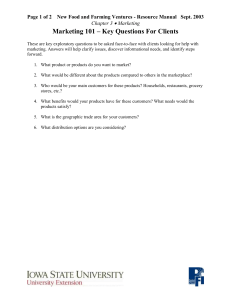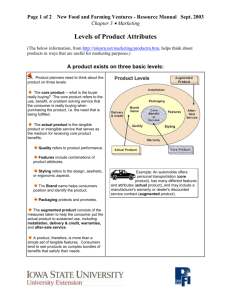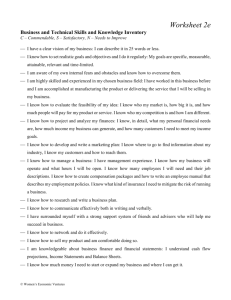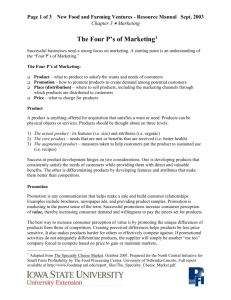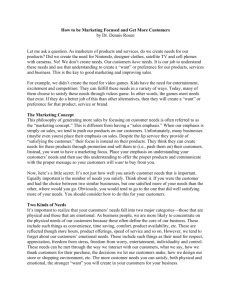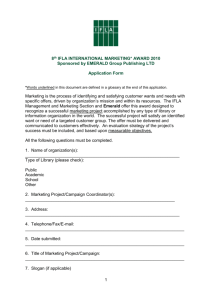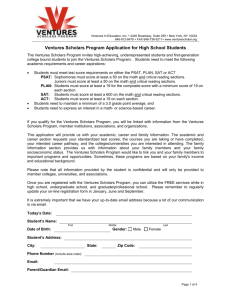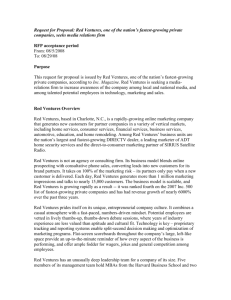Chapter 2
advertisement
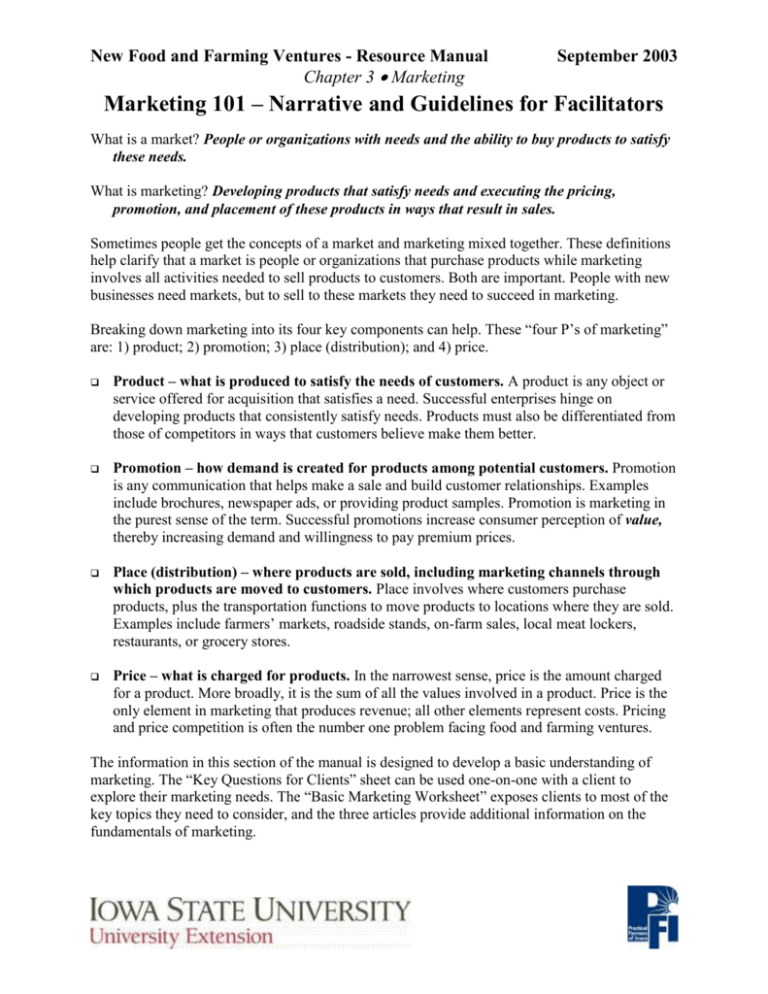
New Food and Farming Ventures - Resource Manual Chapter 3 Marketing September 2003 Marketing 101 – Narrative and Guidelines for Facilitators What is a market? People or organizations with needs and the ability to buy products to satisfy these needs. What is marketing? Developing products that satisfy needs and executing the pricing, promotion, and placement of these products in ways that result in sales. Sometimes people get the concepts of a market and marketing mixed together. These definitions help clarify that a market is people or organizations that purchase products while marketing involves all activities needed to sell products to customers. Both are important. People with new businesses need markets, but to sell to these markets they need to succeed in marketing. Breaking down marketing into its four key components can help. These “four P’s of marketing” are: 1) product; 2) promotion; 3) place (distribution); and 4) price. Product – what is produced to satisfy the needs of customers. A product is any object or service offered for acquisition that satisfies a need. Successful enterprises hinge on developing products that consistently satisfy needs. Products must also be differentiated from those of competitors in ways that customers believe make them better. Promotion – how demand is created for products among potential customers. Promotion is any communication that helps make a sale and build customer relationships. Examples include brochures, newspaper ads, or providing product samples. Promotion is marketing in the purest sense of the term. Successful promotions increase consumer perception of value, thereby increasing demand and willingness to pay premium prices. Place (distribution) – where products are sold, including marketing channels through which products are moved to customers. Place involves where customers purchase products, plus the transportation functions to move products to locations where they are sold. Examples include farmers’ markets, roadside stands, on-farm sales, local meat lockers, restaurants, or grocery stores. Price – what is charged for products. In the narrowest sense, price is the amount charged for a product. More broadly, it is the sum of all the values involved in a product. Price is the only element in marketing that produces revenue; all other elements represent costs. Pricing and price competition is often the number one problem facing food and farming ventures. The information in this section of the manual is designed to develop a basic understanding of marketing. The “Key Questions for Clients” sheet can be used one-on-one with a client to explore their marketing needs. The “Basic Marketing Worksheet” exposes clients to most of the key topics they need to consider, and the three articles provide additional information on the fundamentals of marketing. New Food and Farming Ventures - Resource Manual Chapter 3 Marketing September 2003 . . . and justice for all The U.S. Department of Agriculture (USDA) prohibits discrimination in all its programs and activities on the basis of race, color, national origin, gender, religion, age, disability, political beliefs, sexual orientation, and marital or family status. (Not all prohibited bases apply to all programs.) Many materials can be made available in alternative formats for ADA clients. To file a complaint of discrimination, write USDA, Office of Civil Rights, Room 326-W, Whitten Building, 14th and Independence Avenue, SW, Washington, DC 20250-9410 or call 202-720-5964.
